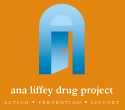Opioid Substitution Treatment
Opioid Substitution Treatment (OST) is where a controlled drug is prescribed in place of the drug the person has become addicted to. Methadone, a synthetic opioid, is prescribed for the treatment and prevention of withdrawals from heroin and other opioids and for maintenance programmes. Another synthetic opioid, a combination of Buprenorphine and Naloxone (sometimes called Suboxone) may be prescribed under certain circumstances. OST takes place in drug treatment clinics or by level 1 or level 2 GPs. Level 1 GPs treat stabilized opiate dependent persons who have been referred from HSE drug treatment centres or Level 2 GPs. Level 2 GP’s have undergone further training and can begin OST with a patient.
OST can provide an opportunity for the drug user to stabilise their drug intake and lifestyle while stopping illicit drug use and associated unhealthy risk behaviours. It can help reduce the risk of overdose, blood-borne infections and offending. It also provides opportunities to maintain contact and work with the person involved. It usually takes place over a number of stages:
A pre-treatment assessment can take place up to ten days prior to commencement on OST. Drug screens are used as part of a range of assessments to develop a care-plan with the patient. Induction is the first stage of treatment when the dose is increased safely to reduce withdrawal symptoms. The stabilisation stage is when a stable dose is achieved. The maintenance stage is when a stable dose is continued during the treatment programme. The detoxification stage is when the dose is reduced and there is a gradual discontinuation of OST.









